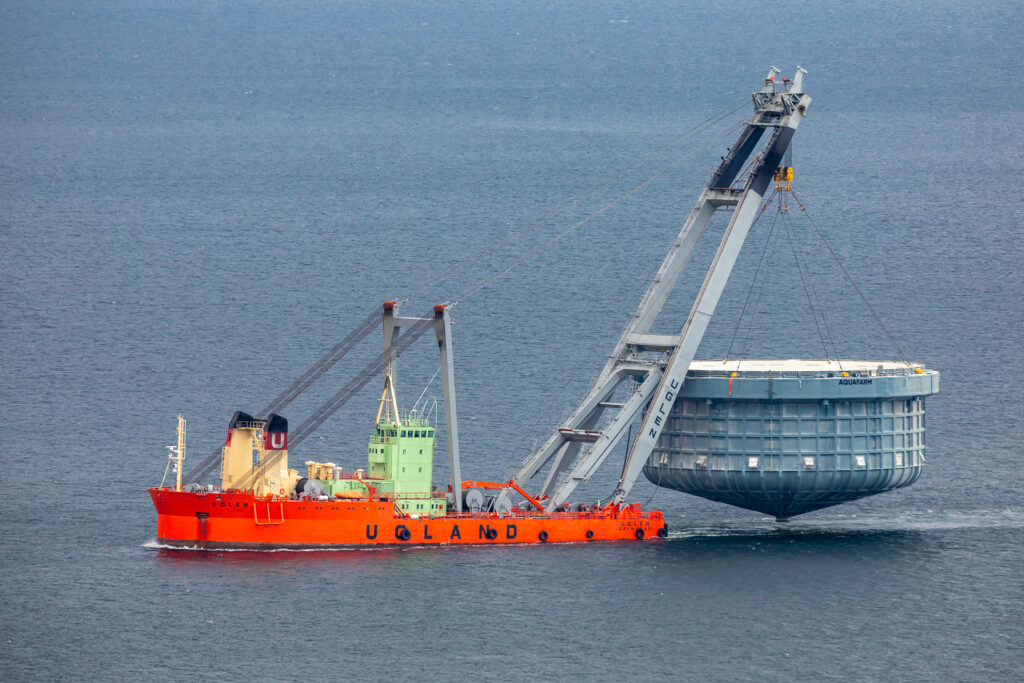Open mind for closed cages

Millions in whatever currency you prefer to choose have been thrown at trying to crack the stubborn problem of sea lice in fish farms – so far, with relatively modest success.
This issue is costing the industry dearly, at least £500m each year in Norway and more than £300m in Scotland over the past decade.
According to one leading aquaculture expert, however, part of the solution could be found by taking a simpler approach.
Are Nylund, a fish health professor at the University of Bergen, has been investigating the lice issue for several years and has come to the conclusion that the deeper at sea the fish farms, the healthier the fish.
He has been working closely with the food research institute Nofima, and the technology organisation CtrlAQUA, which is working to make closed containment aquaculture systems more efficient.
Major salmon farming companies such as Cermaq, Leroy and Mowi are collaborating in the experiment.
He says avoiding lice was a significant motivation when the industry launched “closed farms” at sea. He also maintains that such facilities are not, in fact, fully closed because they release waste substances, so they should be classed as semi-closed. Suck containment systems contain fewer lice and this is why he believes they have a future.
Professor Nylund, who has been researching pathogenic organisms in closed fish farms for a number of years, said: “Avoiding sea lice was an important motivating factor when the industry started establishing closed facilities at sea and they are largely successful.”
“Salmon lice are found in the upper metres of the water column, while the water intake is usually at a depth of 20 metres. This means that the salmon avoid a large part of the infestation.”
However, he says there are several challenges that need to be addressed before these measures can be developed commercially.
Nylund’s research in CtrlAQUA shows that many of the pathogens found in a semi-closed facility accompany the smolt from the hatchery (with the exception of the marine pathogens).
The professor’s main piece of advice to fish farmers is, therefore, to ensure that the smolt they release into semi-enclosed facilities are pathogen-free.
Professor Nylund contends: “This way, the breeders largely avoid getting lice into the cage. However, since the water stays significantly longer in a semi-closed cage than in an open cage, it was thought one should expect a higher infection pressure with other pathogens entering the plant.
“But research shows this was not the case. Semi-closed facilities do no worse than open facilities once infection has gained entry.”
He believes there are several issues that must be resolved before they can be adopted generally.
“All the facilities we work with are prototypes that clearly need to be improved. They are built for calm sea and cannot be placed anywhere.”
There are also improvements that can be made with fish welfare other than avoiding lice, he believes.
His other main advice is to collect water at depths lower than 20 metres, because this increases the distance from the plankton layer in which the lice larvae are found.
“The deeper you go the more you avoid marine pathogens, even though the bacterium Tenacibaculum and the AGD [amoebic gill disease] amoeba will still be found (at lower depths),” he says.
When asked about purifying the intake water, Nylund says such a move is theoretically possible but it is expensive because of the large amounts involved. Waste water treatment is probably an easier approach, he argues.
He said it is important to tackle things one step at a time and waste water was the not the most immediate issue.
“Requirements may be put in place regarding the treatment of waste water. It is easier to treat waste water than treat intake water.
“In closed facilities in the sea, which are called semi-closed because they release waste substances and thus are not completely closed, you can put out smolts and potentially have them there until they are one kilo [in weight].”
Despite semi-closed facilities being more environmentally-friendly, they are still regulated as if they are open net pen farms which means that companies are not allowed to move fish across zones. Sometimes, this can present an operational challenge.
Nylund supports the authorities on this issue, believing there are still too many unresolved problems to be able to relax the rules.
He says: “Our research shows that as long as you do not have smolt that are free of viruses, you will get viruses in semi-closed facilities or any other aquaculture system for that matter.”
However, he does not want to see a framework that is too strict, especially during the development phase.
“Authorities must allow the industry to continue to develop semi-closed systems if they insist on keeping that kind of solution.
“I think the aquaculture industry should be based at sea, except for smolt production. At least based on the knowledge we have today. We must focus on the sea, that is where the advantages lie, and we need to continue to develop semi-closed facilities to avoid salmon lice,” Nylund concludes.

Neptune Aquafarm

